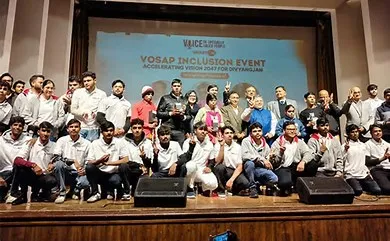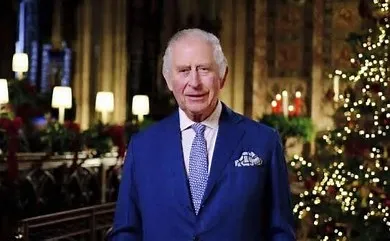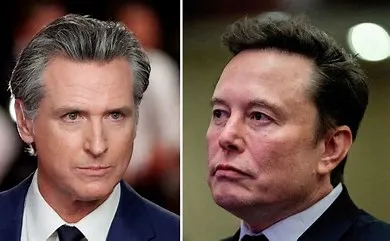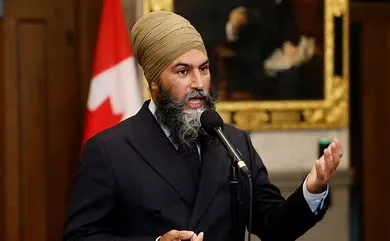Perhaps the aforementioned quote by the three-time Olympic gold medalist was meant to highlight the spirit of sports in the bygone time – space passageway. Perhaps the quote was meant to encompass sports before it became an industry and before exploitation of players became a common practice. And, perhaps the quote still prevails in the hearts of sportspersons but has compromised a tad space for commercialization.
Today, statutes across the globe and judiciary for the most part, have time and oft been necessitated to measure activities and fields against money. Similar is the case with sports which have become an industry in itself. There is little scope for an industry to not fall under the ambit of law.
This Article examines the interaction among sports, competition laws and labour laws, especially the collective bargaining process. The authors have relied upon multitudes of specific illustrations from a variety of sports. These illustrations have contributed to the recognition and growth of the subject matter. Furthermore, the authors have highlighted the unique characteristics of sports and the challenges posed by the collective bargaining process vis-à-vis the sports industry.
Nonetheless, the Article also clarifies that several of these challenges can be resolved and that the collective bargaining process, irrespective of the multiple issues surrounding it, can be beneficial to professional sports.
LEGAL STRUCTURE OF SPORTS
When talking about the ‘law as a system of rules,’ Sir John William Salmond wouldn’t have believed that the sporting rules would command a distinct division of law, alias ‘Sports Law’. Astonishingly, today, not only sports law is already an acclaimed and practiced area of law, the convergence of sports and law traces its presence through numerous diverse fields of law. Said fields of law include but are not limited to Contract Law, Labour Laws and Antitrust Laws.
Global socio – legal issues such as drugging, tampering, sledging and illegal use of force have been, more or less, dealt with by the respective governing bodies. However, there exist multitudes of issues which haven’t been deliberated upon and have little to no jurisprudence for guidance or resolution.
One such issue is the issue of collective bargaining in professional sports. Collective bargaining is the practice of discussion between the employer and the employees wherein the employees act as one body, instead of separate entities. Historically, during the course of collective bargaining, remuneration, work-hours and working conditions were mandatorily discussed. But, there was always scope for other matters to be put on the table as per mutual agreement. In contrast, collective bargaining in professional sports encompass negotiation related to issues similar to injuries complaints, payments, medical privileges, retirement etc.
With the settlement of the talk betwixt the employer and the collective voice, a binding contract is formed.
THE USAGE AND NEED OF COLLECTIVE BARGAINING IN SPORTS
The reasons for promotion of unions and collective bargaining in professional sports are as solid as all other trades. Similar to all other fields comprising of employer – employee relationship, imbalances of bargaining power find its presence in the case of professional sports as well.
Comparatively, the benefits of collective bargaining in sports are many: Apart from parity in negotiating authority, better deals for the players and regular conversation betwixt players and governing authority / administration are assured. Additionally, players, especially newcomers get to know their liberties and privileges.
Furthermore, as a whole, these entitlements are better protected with the presence of a collective bargaining agreement (hereinafter “CBA”). Ultimately, due to the presence of CBAs, issues like duration of employment, remuneration, complaint redressal become subject to negotiation and aren’t one-sidedly forced by the owners / employers.
CHALLENGES WITH THE AMALGAMATION OF COLLECTIVE BARGAINING AND SPORTS
1. The parties to collective bargaining
Unlike traditional contractual negotiations, at times, there are more than two parties to the process of collective bargaining in certain sports. For instance, the case of Formula One Motor Racing, the situation is a subject of debate:
The racer signs a binary employment agreement with the ‘team’ (Example: Red Bull Racing). But, multitudes of interdependent agreements are present among the racer, the teams and the International Automobile Federation (“FIA”). Ergo, the aforementioned agreement will be administered by multiple regulations. These regulations find their genesis in the top to down set up from regulating authority to the racer.
Therefore, all Formula One motorists ought to follow the conditions of employment necessitated by the racing team along with the rules of the FIA. Hence, in the authors’ opinion, if the Grand Prix Drivers’ Association aims to undertake collective bargaining on behalf of the Formula One drivers, the employing team as well as the International Automobile Federation will have to present.
Secondly, the racing teams participating in Formula One Motor Racing undergo an analogous contract with the International Automobile Federation. Interestingly, although the association betwixt the teams and the International Automobile Federation is not that of employment in nature, it still has witnessed collectivization of teams through the Formula One Teams’ Association.
Notably, the option of the team and the regulating authority functioning as the ‘joint employer’ has been taken up by the US authorities. The relevant jurisprudence states that the regulating authority (of the sport) along with the team (engaging the player) represented a joint employer. On one hand, the regulating or the governing authority commands authority over issues such as transfer of athletes whereas on the other hand, the team has the authority to alter the provisions of a typical contractual agreement.
In the case Formula One, Formula One Management (“FOM”), which is the commercial rights holder, is prominent too. As per the numerous vertical arrangements signed amongst the bodies, FOM has the authority to modify any racer’s contract without running it past the team or the FIA. The Rugby athletes in South Africa collectively bargain with the regulating authority along with the distinct commercial rights controller. Nonetheless, in the authors’ opinion, getting two different bodies in the capacity of employer is a substantial problem: While the regulating authority will aim to safeguard the sportsmanship and uprightness of the game, a body with commercial motives (specifically), might undermine these fundamental aims.
In the case of F1, the irregularity in the interests due to the presence of four noticeable parties will lead to competition amongst the voices present in the process of collective bargaining. Speculatively, the party with highest financial authority will have its way.
Either way, the problems with accommodating multiple parties in the bargaining process aren’t incurable. Alternatively, it is the authors’ belief that confronting the issues objectively, with the parties retaining equal bargaining power, will only shelter the sport from regulatory exploitation. But, it is pertinent that the connections among the players, teams, regulatory or governing entities etc. are openly and clearly determined and accommodated.
On a different note, the judiciary has shown willingness to determine employment connection betwixt players and regulating or governing authority, despite the nonexistence of appropriate documentation highlighting the same. In Jones v. Welsh, the court stated that an athlete’s registration with the governing entity was sufficient to establish employer – employee relationship.
Scholars have pointed out that the adequate way out with this issue is the formulation of a ‘tripartite agreement’ amongst the 3 parties involved. Thus, in case of Formula One Motor Racing, a tripartite agreement among the Grand Prix Drivers’ Association, the Formula One Teams’ Association and the FIA could solve majority of the aforementioned issues.
2. The issue of superstars
The idea of collective bargaining rests upon adequate compensation of employees, which calls for standardization of remuneration. Interestingly, the first inadequate monetary compensation was the reason behind the formation of the first sports union. The policy of compensating predictably and as per the player’s skills is a minute detail undertaken during the process of collective bargaining.
A cooperative compensation scheme has a visible advantage: The process of collective bargaining can be utilized to guarantee adequate compensation to all, especially the ones with the least bargaining power.
But, the aforesaid shared voice has scope for injustice too. While the rigid nature of collective bargaining agreements puts the vulnerable ones in a better position, simultaneously, it harms the remuneration of the best and the most seasoned players. While the big names are few, their influence on the sport is disproportionate. Additionally, no professional league wishes to lose out on the presence a celebrity of the sport.
Ergo, the best are the worst hit by a compromise on individual flexibility. But, there exist ways for attaining flexibility: Rugby CBAs in New Zealand allow the best and most famous athletes to negotiate greater compensation while promising basic (agreed) salaries to all the players.
The issue, however, with the aforementioned exception is that the whole reasoning of the collective gets dented. Once compensation is made flexible, other subjects of the collective bargaining agreements might just fall in the pit of flexibility. This will hinder the exclusivity aimed by the collective bargaining agreements.
Hence, policy initiatives to encompass remuneration of superstars, while keeping all them satisfied, are necessary. In the author’s opinion, the flexibility to reshuffle individual compensation is a slippery slope but is a positive for the game en masse.
3. The Tussle between Labor Laws and Competition Laws
a) The United States of America
The tussle betwixt competition laws and labour laws is characteristic. While competition laws endorse a lawful clash among competitors, labour laws call for coordination among them.
In the US, post the formulation of the Sherman Antitrust Act, judges treated labour unionization as an unlawful constraint on commerce. Later, the Norris LaGuardia Act and the Clayton Act provided statutory exemption to unions. The federal courts have highlighted that labour unions aren’t schemes against competition and commerce.
However, the process of collective bargaining was still not in convergence with the competition laws. To deal with the loophole, the judiciary fashioned non-statutory exemption.
The courts stated that it was pretty hard to make employers and employees negotiate collectively and prohibit them from indulging in anti – competitive practices. Yet, certain constraints can be placed on competition laws to make sure apt collective bargaining takes place.
The federal judiciary has underlined the need for competition laws to make space for collective bargaining when needed. Ergo, the solving of labour conflicts through collective bargaining was favored over antitrust laws. Notably, it was in 1992 when it was explicitly stated that the aforesaid exemption shields the CBA against competition law issues.
Later, in Powell v. NFL, it was established that the exemption covered the employers’ one-sided execution of the provisions of the CBA, including free agency restriction clauses, after the CBA has terminated. Ergo, once begun, the process of collective bargaining lasts post the termination of the CBA as well.
In Brown v Pro Football, after the expiration of the CBA, the NFL one-sidedly executed their last-best deal. The athletes contested this under antitrust laws. However, the judges stated that the exemption shelters the conditions even after the termination of the CBA.
Logically, Brown v. Pro Football has been treated as the jurisprudential successor to Powell v. NFL. Scholars have argued that continuing with the last, best deal is synonymous to preservation of the status quo. Thereafter, it has been argued that suit under competition laws to contest the application of the last offer will hinder the stability betwixt the players and the governing body.
However, a breakdown of the collective bargaining association ends the exemption. Here, the NFL Players Association disbanded its union and thus, obtained access to competition laws.
Thereafter, the affected athletes brought a competition law suit against the NFL. The disbandment of the union was treated lawful and thus, the collective bargaining association betwixt the league and the union was lost. Therefore, the non – statutory labour exemption was dismissed. Conclusively, it was held that the league’s free agency restriction went against the essence of completion law and the athletes were awarded appropriate damages.
Thereafter, America sports witnessed an all growing tussle betwixt the antitrust laws and the employment laws. The league owners would lock out athletes whereas the athletes would disband union and bring competition law suits against the owners.
Particularly, after the 2010-11 negotiations, the players reached out to the district court claiming that the lockout of players was a manipulative mechanism to force the athletes to settle at a price chosen by the league owners and fall in line with the free agency restraining provisions.
Additionally, the athletes highlighted that unionization bound the players by giving the league owners a loophole to implement exploitative limitations on athletes at their will. Furthermore, an injunction against the lockouts was sought by the athletes as the league had locked out the players.
The NFL owners modelled 3 layered argument: Primarily, the judiciary was not authorized to end the lockouts as per the Norris-LaGuardia Act. In arguendo, the owners explained that the lockout was invulnerable to competition law issues as per the non – statutory exemption. Lastly, it was stated that as per NLRB v. Truck Drivers Union, the concept of defensive lockout was upright because it was in line with labour policy of maintaining pre-achieved balance between the parties.
Resultantly, the court refused to buy into the owners’ reasons and lifted the lockout. The judges stated that labor laws were valid at times when the issue included or generated from a labor dispute. If the members reject the union, strip away its bargaining power and advance separate negotiation offers, then the labor laws of the country will not be applicable.
Drawing from the aforesaid argument, the judges stressed that Norris LaGuardia Act and its provisions regarding restriction on ending lockouts was relevant only to labor law issues. With the disbanding of the player’ union, the case did not qualify as a labor law issue. Additionally, the haphazard usage of the labor laws to undermine the rights of the employees by normalizing anti – competitive practices was shunned. Moreover, the court put emphasis on the fact that the non – statutory labor exemption was not pertinent as the union and the bargaining process did not exist altogether.
Later, the court pointed the age – old rule that the labor rules prevailed over the relative competition policy in specific situations where, inter alia, the exemption revolved around compulsory issues of the negations during the collective bargaining process. As the lockout did not form a part of the compulsory issues, the relevance of the non – statutory exemption was nil.
Afterwards, the 8th circuit overturned the lower court’s judgment. The order of the district court lifting the lockouts was withdrawn. It was stated that no law mandated the presence of a union for the dispute to be regarded as a labor dispute. The court found it convenient on the players’ part to disband the union in order to undertake a competition law dispute.
Secondly, the court clarified that the Norris – LaGuardia Act’s provisions about anti – injunction safeguards were not formulated for the exclusive interest of the workers/unions. Thus, the court opined that the Norris – LaGuardia Act did actually forbid a federal court from giving an injunction banning the employer from executing a lockout against the workers.
Finally, the league and the players decided to resolve the dispute and the athletes restructured the union with the parties entering a new CBA.
The NBA has witnessed very similar disputes but the cases were resolved amicably and the parties entered a new CBA.
b) Europe
In Europe, the most significant characteristics of competition laws related to the subject matter are
1. The ban on practices hindering competition
2. The bar on abuse of dominant market position
The European competition law forbids any kind of agreement among entities that hinders competition unless such agreement encourages commerce, assists the customers and takes the essential restraints into account. However, with regards to abuse of dominant status in the market, no exceptions are available. This provision has 3 primary components:
1. A dominant position in the relevant market
2. Exploitation of the dominant position by the entity
3. Consequence borne by the industry
There is little debate regarding the presence of a dominant position in any particular sport: The regulating or governing authority has monopoly in the market.
Nevertheless, similar to America, CBAs are partly protected against competition laws. In 1999, the court looked into the tussle between Competition Law and Collective Bargaining process. In Albany International, the judiciary held that exemption given to CBAs is valid only if it revolves around the essential elements of the CBA like remuneration/working conditions. The rationale behind the same is that the aforementioned elements do not distress any 3rd entity and do not affect the market. Here, the existence of multiple parties to the bargaining process shows that the CBA might disturb 3rd parties and therefore, not fall in the ambit of the exemption.
For instance, the FOM enters into broadcasting agreements with few agencies. Notably, there exists an exclusive employment interconnection among the FIA, the formula one teams and the FOM. Ergo, rival broadcasting agencies come across an air-tight obstruction when they try to cover the sport. Here, a grievance under Article 102 would be easier to establish due to the dominance enjoyed by the governing or regulating authority.
With regards to the UFC, insurance was a long drawn collective demand by the athletes. In 2011, Zuffa insured all MMA fighters participating in UFC. However, the said insurance policy wasn’t a segment of the CBA. If the insurance arrangement was made through a CBA, then the Albany International would have been applicable because such an arrangement would have hindered competition by stopping rival insuring companies from contracting fighters. However, the UFC could take the stance that the Albany exemption applied to the situation and was an agreement betwixt the employer and employee revolving around basic working conditions.
Additionally, scholars have underlined the need to consider the distinct nature of sports. Ergo, even if the prevalent exemptions are not applied, numerous factors of the sporting industry like coordination among more than 2 parties, societal and scholastic features, the need for indecision vis-à-vis the outcome and the sole authority of the governing / regulating body must be taken into account.
Notably, there should be adequate room in the competition policy to consider, inter alia, societal, historical and financial aspects of the sporting industry as its unique features. However, in order to smoothen the process and make sure that no law is compromised in a biased manner, the authorities have laid down certain tests to administer the application of Competition law to the sports industry.
Ergo, there exists little doubt against the belief that competition laws act as the biggest shackle to the process of collective bargaining in sports. Nonetheless, a distinct approach as highlighted in the case of Meca – Medina, is plausible. As stated before, this method acknowledges the advantages that CBAs could provide to the sport.
Conclusively, the issue of CBAs in sports continues to post moot questions. In the authors’ opinion, CBAs can be altered to be advantageous to professional sports. And, while dealing with application of competition law to sports, a novel method can be adopted wherein the unique characteristics of the industry are taken into account.
CONCLUSION
It is no news that the amalgamation of rules and statutes governing professional sports and the process of collective bargaining do not even come close to an overlap. Although the benefits of implementing the process of collective bargaining in the sports industry are clear, the ambiguity in law highlights that there still exist moot issues which seek attention.
Captivatingly, the unique nature of sports has made sure that the collective bargaining process locks horns with numerous laws. While the problems generating from the confluence are unique, they can still be worked around.
The presence of more than two parties to the bargaining process is being seen as a needed division of power for the past few years and has become common in many fields. Additionally, the problems with multi party bargaining can be taken care of through tripartite agreement. Additionally, within a collective bargaining agreement, if some flexibility to the bigger stars of sport helps them remain in the game and aids the newcomers and weaker players to attain better deal, then there is little harm to the process. Moreover, antitrust issues are fit enough to determine some common ground with the collective bargaining process: Recent judicial decisions have highlighted the same. Ergo, collective bargaining is bound to remain and mature in the industry of sports.






















